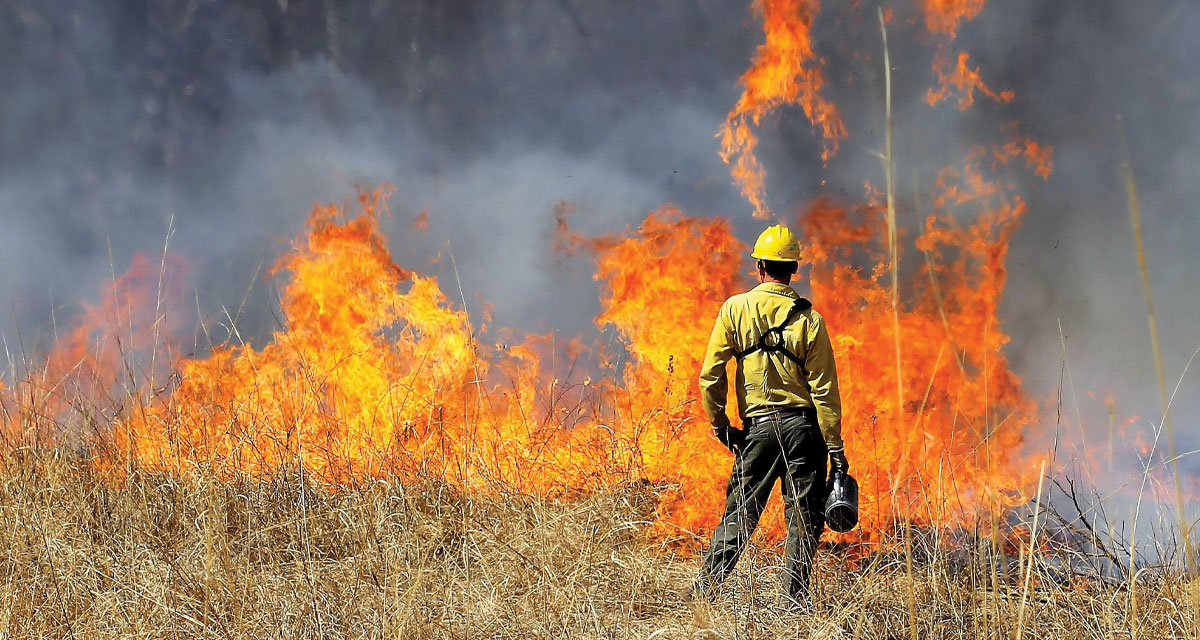The fall season brings out the best in nature lovers, who wander around their property no longer impacted by pesky insects or the high humidity. Trees receive a careful inspection from their owners, who notice growth, a harvest of fruit, or the impact of an infestation—for example, dieback in the limbs and sometimes recognition of invasive diseases. Help from a professional is needed, not just for one appointment, but in an ongoing periodic assessment to reach particular goals. Perhaps you desire to plant specific varieties to benefit pollinators or wildlife for timber management, human use, or preventing erosion. A Land Management Plan, offered through the North Carolina Forest Service, is an option for all residents in each of the 100 counties with ten acres.
A homeowner’s experience
“I didn’t know a Land Management Plan was available to us until I heard about it from a friend,” shares Dale and Stephanie. On the scheduled day, our local Forest Ranger came out to walk on our property. We learned about the types of mature trees, and were surprised by the information about having persimmon, mulberry, cucumber Magnolia, and sourwood trees. Some were doing well, while others were just surviving. We received information on their age, numbers, and level of health and were shown specific locations and examples of invasive species. One, in particular, was a kind of grass growing in the underbrush near a creek. The Forest Ranger informed us also that we had too many beech trees; typically, one is essential per acre, and that our Ironwood trees, in the birch family, should be thinned. Weeks after our appointment, a document arrived by mail to provide an overview of the recommendations for thinning, removing, and optimizing the health of our trees to reach our goals. We were quite pleased with the outcome. We recommend starting a plan for anyone needing to manage their woodlands.”
Scheduling a controlled burn
When to burn is just as important as why controlled burns are essential. Typically, a woodland area is set ablaze every three to five years by N.C. Forest Rangers, intended to control the forest’s growth, composition, health, and quality. Usually scheduled in early spring, a burn will reduce the fire hazards of layering leaf mold and dead timber. Releasing nutrients to the soil improves tree growth and health while eliminating some of the hardwood competition. The outcome opens up opportunities for sunlight in the understory of surrounding trees. Fire is necessary for some tree varieties, such as oak, mulberry, chestnut, sycamore, walnut, poplar, maple, Magnolia, and fruit trees, opening the door for new seeds to develop into seedlings and expand the forest. From spring to fall, the trees appear brighter and healthier due to the decision of a controlled burn.
Tip: North Carolinians do not require a Land Management Plan to schedule a controlled burn. It may be simply a recommendation or a procedure planned every three years.
Utilizing N.C. Nursery for optimal growth
Since 1924, North Carolina foresters and rangers have collected seeds from our native trees, intended to be grown by the state’s residents. The expansive list includes trees to benefit pollinators and wildlife varieties, and contains conifers, shrubs, and native grass plugs.
The native forest tree seedlings offer a reliable supply of the best genetic selections at an affordable price. As a result of the Tree Improvement Program, landowners receive a better volume of growth, form, disease resistance, and straightness of each native variety. In addition to choosing as few as ten seedlings or several thousand to achieve a goal, N.C. Forest Service can create a grid to ensure proper planting in a welcoming environment.
Tip: Residents can order from the N.C. Nursery starting on July 1st of each year; however, a Land Management Plan offers recommendations for on-site location and creating a planting grid.
The North Carolina Forest Service offers tree planting, thinning, and timber harvesting services. Perhaps your land would benefit from a living document to create a legacy for your family. The first step is to develop a plan!



















